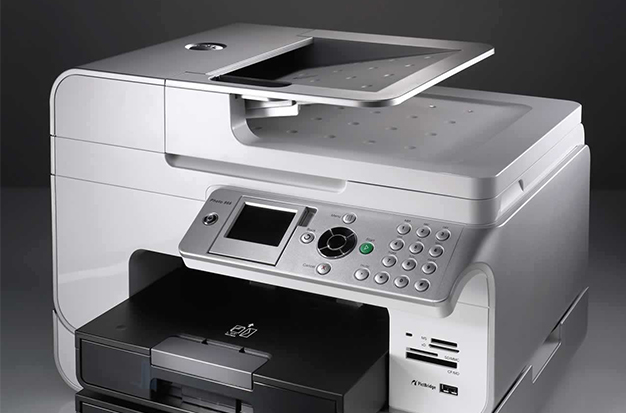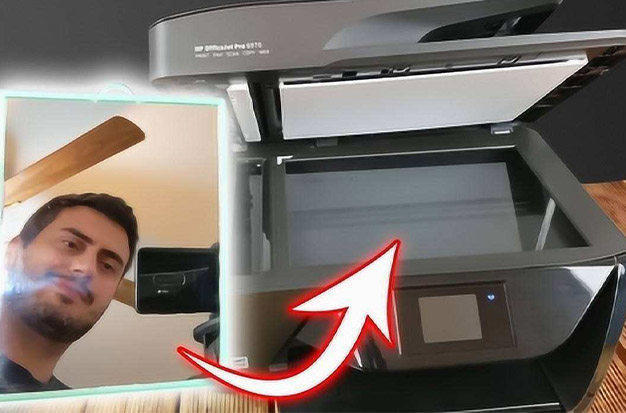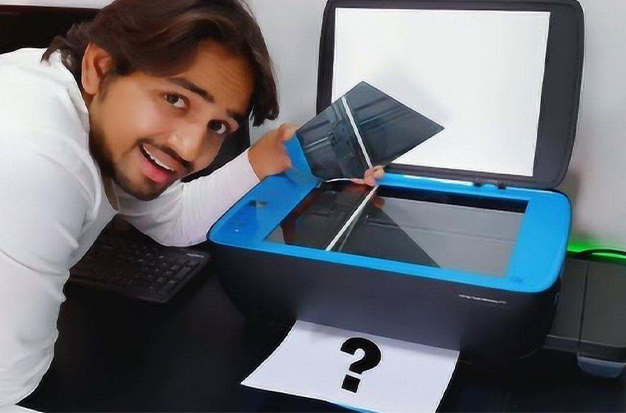
How does copying a mirror turn out? If you photocopy a mirror, the copy for a front-coated mirror will be clear or white, and the copy for a rear-coated mirror will be dark. Additionally, it is based on the kind of photocopy machine being used.
Without a doubt, photocopiers are useful tools. If you treat them like toys, there may be ongoing damage. Simply read this article through to the end to satiate your urge to experiment.

What Happens When A Mirror Is Copied?
You might consider what will happen if you photocopy a mirror before getting too far into an adventure. What other outcomes are possible? Let’s put an end to curiosity. A bright image won’t appear when you scan a mirror. As an alternative, you will receive a clear or white copy for a front-coated mirror and a black copy for a rear-coated mirror.
A photocopy machine typically makes a copy after light reflects off the white part of the document. The photoconductive drum’s surface is where the light reflects after striking the white portions of the document.
As the drum conducts electricity, the illuminated regions discharge it to the ground. As they are not illuminated, the document’s black areas continue to be negatively charged. As a result, a scanned copy is produced on the drum’s surface.
All of the light will reflect when a mirror is placed on the scanner’s glass bed, producing a black image. In other words, the detector is not struck by the reflected light. As a result, the angle of incidence and the angle of reflection are equal, and the copy is dark.
The mirror copy will also be dark if the light source and the sensor are not lined up. The copy will be white if both are lined up.
Another Explanation
Due to the fact that the photocopier generates the output after reflecting the light to the white portion of the original copy in your case, if the mirror is placed, the entire light will reflect the result as a completely black print.
When You Photocopy A Mirror, Why Do You Get A Black Copy?
You won’t always see a dark image when scanning a mirror, though. The photocopy machine’s scanning technique also has an impact.
The charged area development (CAD) method or the “write white” method is employed by some analog photocopiers. A clear or saturated white copy is produced using this method because the photoreceptor drum doesn’t draw in the toner.
Some digital photocopiers employ the Discharged area development (DAD) or “Black write” method as well. In this technique, the photoreceptor’s discharged area strongly attracts the negatively charged toner. A black piece of paper will be the end result.
The scanners are typically made for less reflective, slightly opaque, and highly specular materials. The mirrors, on the other hand, lack specularity and opaqueness and are highly reflective.
The Process Of Photocopying A Mirror
A bright lamp shines on the original document, and the white areas of the original document reflect the light onto the photoconductive drum’s surface. When exposed to light, the drum’s exposed areas become conductive and discharge to the ground. Negative charge is maintained in the drum’s unlit portions, which correspond to the black parts of the original document. The surface of the drum bears a latent electrical image as a result.
The perfect mirror is opaque, specular, and has perfect reflectivity. Most copy machines are made to handle materials with high specularity, variable opacity, and relatively low reflectivity. For the mirror experiment, depending on how the copying machine is made, I can see at least 3 possible outcomes. As was already mentioned, when the light source and detector are out of alignment, you typically see black. The image will be a saturated white if the light source and detector are lined up. The image would be slightly out of focus (assume diffuse illumination) if the detector were a CCD camera.
How Can I Make A Mirror Photocopy?
But why, when you photocopy a mirror, won’t you get a bright image??? You must be familiar with the scanning procedure in order to comprehend this. perhaps how a scanner operates? How to scan a mirror?
Typically, one of two types of scanners—the charged drum-type or the one with a CCD camera—is used. The same rule governs each setup, though the outcomes vary slightly.
- The document is illuminated by the light source when it is placed on the glass bed.
- The scanning starts and the light source follows the track as well.
- As the light source moves through the scanner, an angled mirror also does so. The document’s reflection can be seen in the angled mirror.
- It records the document’s reflection in the angled mirror.
- The image from the fixed mirror is finally reproduced by a charged-couple device or CCD. Your computer’s hard drive can be used to save the image.
- In order to achieve optical distance, front-coated mirrors are typically used in photocopy machines.
To learn how to photocopy a mirror after you have a basic understanding of how a photocopier operates, continue reading:
- In the photocopier, set a mirror on the glass bed.
- By pressing the “Scan” button.
- The photocopier’s black base is observed by the scanner’s movable mirror.
- In the end, you will be given a dark copy of the mirror, which is the reflection of the scanner’s base that was captured on film by the adjustable mirror.

Conclusion
Here is the conclusion to our fascinating topic. Making strange photocopies is entertaining and a good way to pass the time. It can also be very dangerous at the same time.
Depending on the mirror and photocopier being used, a mirror photocopy will either be clear or dark.
Many people also attempt to imitate things like water, fire, money, animals, and even their own faces. Such negative behavior ought to be avoided. If you have ever attempted to copy a mirror, please share your findings in the comments section below.
